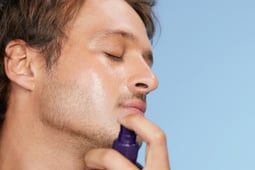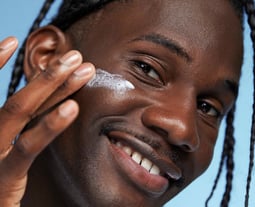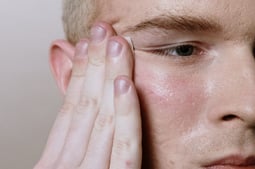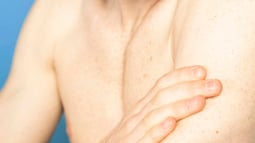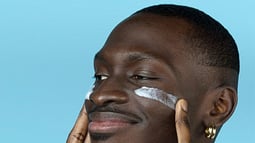

The difference between sebaceous filaments and blackheads
Photos Bastien Lattanzio
Words Matthieu Morge-Zucconi
Share the article on
Say hello to your false enemy.
Summary
We’ve all been there. One morning, as you’re getting ready for the day, you notice tiny little dark spots. Blackheads, you assume. Not so sure: they could be sebaceous filaments.
What are sebaceous filaments?
Your skin naturally produces sebum. This isn’t necessarily bad. Producing sebum doesn’t always mean you have a shiny forehead or an oily nose: according to its type, your skin will produce more or less of it. The sebaceous filaments allow your sebum to reach the surface of your skin, to provide your skin with its natural moisture. The phenomenon is perfectly natural and the filaments don’t spell anything bad for your skin: on the contrary, they allow it to be naturally moisturised.
Sebaceous filaments aren’t as dark as blackheads, yet they’re both often mistaken for one another. They are white, sometimes gray-ish and travel in packs: you find one per pore in the most affected zones (often on the nose).
How is it different from blackheads?
Despite their similar appearance, sebaceous filaments and blackheads aren’t really the same thing. To distinguish them, the test is relatively simple. Upon pressing on a sebaceous filament, you will see sebum coming out in the form of some tiny whitish snake (yes, it does sound a little disgusting). Meanwhile the end of a blackhead will always be darker than the rest coming out of your pore. The other difference is that blackheads are found on the surface of your skin, while sebaceous filaments are found much deeper inside.
Are sebaceous filaments to be eliminated?
The quick-fix solution of getting the content of clogged pores out outright, isn’t the right one. Keep your fingers and blackhead remover away. Getting them out by hand or in any way, shape or form is indeed discouraged. As with blackheads, the elimination of a sebaceous filament can lead to skin irritation or the appearance of a scar if it proves to be stubborn, and can even lead to the eruption of a spot if bacteria finds a way into your weakened pore.
However, to make them less visible, the course of action is simple: exfoliate your skin regularly, once weekly in order to unclog the pores. Likewise, make the most of the astringent effect of a clay mask for clearer skin: the mask will absorb the excess sebum to avoid the accumulation of residue and sebum. Finally, the use of a hydrating balancing cream will help regulate the skin’s pH in order to avoid the excess production of sebum.
You can now draw a distinction between sebaceous filament and blackheads. No matter what, resist the temptation to pop or inflict any other barbaric treatment upon them: your skin will thank you for it.

